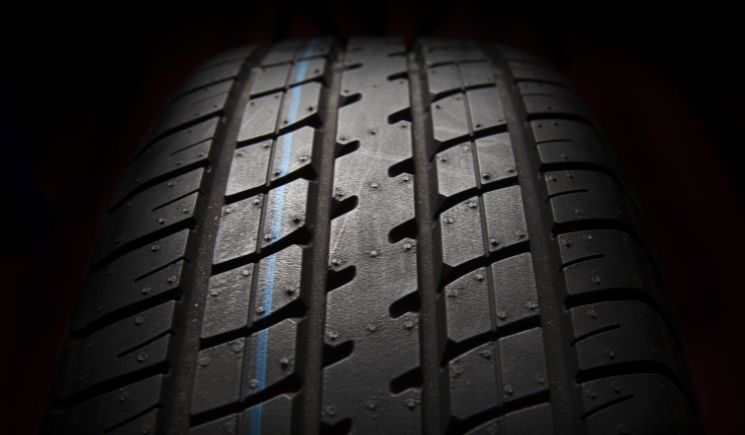Can You Put Steer Tires On Drive Axle

Driving an automobile can be a complicated process, and knowing the ins-and-outs of your car is essential for keeping it running.
One important factor to consider when buying tires for your vehicle is whether you should put steer tires on the drive axle or not.
In this article, we’ll take a look at the pros and cons of using steering tires on the drive axle so that you can make an informed decision about what’s best for your car.
We’ll also explore some alternative options if you decide against putting steer tires on your drive axle.
So read on to learn more about how to properly outfit your ride!
Table of Contents
- Advantages Of Using Steer Tires On Drive Axles
- Disadvantages Of Using Steer Tires On Drive Axles
- Factors To Consider Before Deciding To Use Steer Tires
- Types Of Steer Tires Available
- Safety Considerations For Using Steer Tires
- Tips For Making The Most Of Steer Tires On Drive Axles
- Frequently Asked Questions
- How Do I Know If My Vehicle Is Compatible With Steer Tires On Drive Axles?
- What Is The Average Lifespan Of Steer Tires On Drive Axles?
- What Are The Installation Costs Associated With Installing Steer Tires On Drive Axles?
- Are There Any Special Maintenance Requirements When Using Steer Tires On Drive Axles?
- Is It Safe To Use Steer Tires On Drive Axles In All Weather Conditions?
- Conclusion
Advantages Of Using Steer Tires On Drive Axles
- Improved handling and stability
- Better traction and smoother acceleration
- Increased control over lateral movement when cornering at high speeds
- Wide tread pattern offers improved grip and helps prevent slipping or sliding while turning sharply
- Specifically designed to handle greater weight loads than other types due to their reinforced sidewalls
- Reliable and durable enough to last through even the toughest conditions
- Does not compromise safety or sacrifice style.
Disadvantages Of Using Steer Tires On Drive Axles
- Creates a much rougher ride for vehicle occupants due to increased road noise and vibration
- Changes the handling characteristics of the vehicle, making it overly sensitive to steering input and more prone to oversteer or understeer
- Compromises cornering stability, increasing the risk of going off-track or spinning out of control during sudden maneuvers
- Steer tires are not designed for heavier loads at lower speeds typical of rear axle uses, resulting in shorter lifespan and higher replacement costs
- Performance requirements, environmental conditions, and budget constraints should be carefully considered before making a decision.
Factors To Consider Before Deciding To Use Steer Tires
When it comes to outfitting drive axles with steer tires, there are many things to consider. From safety and comfortability factors to the types of tire available on the market today, no driver should make this decision lightly.
While it may seem like a straightforward choice for some motorists, making an informed decision is essential in ensuring that you get the most out of your vehicle without risking its performance or structural integrity.
First and foremost, drivers must assess their own individual needs when determining whether or not they should use steer tires on their drive axle. If they are looking for increased traction while driving off-road or over uneven terrain then steer tires could be beneficial as they provide more stability than standard radial tires.
They also offer better grip in wet conditions which can improve handling and reduce hydroplaning risk. Additionally, steer tires tend to wear down slower so replacing them less often could mean saving money over time.
However, before deciding to go with steering wheels for the drive axle, drivers need to ensure that their car’s suspension system can accommodate the added weight that these heavier tires bring with them.
Additionally, if the car has been fitted with a limited slip differential then special attention needs to be paid as certain models might not work well together resulting in decreased fuel efficiency or even damage other components of the vehicle’s powertrain system.
All these points should be taken into account before selecting steer tires for installation onto a car’s drive axle – weighing up both the advantages and disadvantages until arriving at a sound conclusion based upon one’s individual requirements and expectations from their vehicle.
With all options considered carefully, drivers can confidently move forward towards finding the right set of suitable tyres for their particular purpose; allowing them to take full advantage of what modern automotive technology has to offer without compromising on quality or performance standards.
Transitioning seamlessly into our next section about ‘types of steer tyres available’, we explore further how different designs impact functionality and longevity…
Types Of Steer Tires Available
Steer tires are a type of tire that can be used on both drive axles and steering axles. They provide superior handling, traction, and stability while driving in the most difficult conditions.
The five types of steer tires available to drivers today include:
- All Season Tires: These versatile all season tires provide excellent grip for wet or dry roads and long lasting tread life.
- Winter Tires: Specialized winter tires are built with extra rubber compound to handle icy or snowy roads without compromising performance.
- Off Road Tires: Designed for off road use only, these heavy duty tires offer more traction compared to regular street tires when going over rocks, dirt trails, or muddy terrain.
- High Performance Tires: These specialized high performance tires have an aggressive tread pattern and softer compound so they can grip the pavement better during cornering at higher speeds.
- Racing Tires: For extreme racing enthusiasts looking for maximum speed, racing tires feature soft compounds designed for ultimate acceleration and braking power around tight turns.
All of these options give drivers flexibility in choosing the best tire for their needs whether it’s on the highway or off road adventures. With such variety in products comes safety considerations too; motorists should always check manufacturer recommendations before fitting any new tire onto their vehicle’s wheels.
Moving forward then let us delve into what measures need to be taken when using steer tires with regard to safety.
Safety Considerations For Using Steer Tires
When it comes to steer tires on drive axles, safety should be the primary concern. The performance of a tire and its ability to hold up in various conditions is essential when putting them on any axle. This can mean the difference between an accident occurring or not.
It’s important to understand that every type of tire will have different capabilities and limitations when used as either a steer or drive tire.
The first consideration for using steer tires on drive axles is their load-carrying capacity – how much weight can they safely support? Steer tires are typically rated for lighter loads than those intended for use with driveshafts, which means you’ll want to make sure your vehicle weighs less than what the tire is designed for before installing them.
Additionally, you’ll need to pay close attention to tread wear over time since heavy usage may cause premature deterioration of the rubber compound leading to blowouts or other issues.
Finally, while there are many benefits associated with steering tires being used on drive axles such as improved traction and lower rolling resistance, these advantages must be weighed against potential drawbacks like increased fuel consumption and greater susceptibility to road damage due to their softer construction.
By understanding each aspect carefully and making a conscious decision about whether or not this setup is right for your application, you can ensure optimal performance from your vehicles’ wheels at all times. With this knowledge in hand, let’s explore some tips for making the most out of steer tires on drive axles.
Tips For Making The Most Of Steer Tires On Drive Axles
Did you know that steer tires can be used on drive axles? It may seem counterintuitive, but they are surprisingly durable when properly maintained and cared for. With a few simple tips and tricks, your vehicle will be able to make the most of these special tires.
At first glance, it might appear as though steer tires aren’t suited for driving applications; however, with proper attention and maintenance, they’re more than capable of taking you wherever you need to go!
To begin with, ensure that you check the tire pressure frequently and adjust accordingly. Doing so helps keep them from losing air pressure too quickly which leads to premature wear and tear or even blowouts.
Next up is rotation – this is especially important if you want your steer tires to last longer on the drive axle. Rotating them regularly ensures that all four tires get equal wear over time instead of just one spot wearing down faster than others due to constant acceleration or braking.
Finally, pay close attention to any signs of damage such as cracks in the tread or bulges in the sidewall – if anything looks suspicious take it into an auto shop right away before further harm occurs.
Overall, while there may not have been much thought given initially to putting steer tires on a drive axle, doing so can actually extend their lifespan significantly with careful consideration and some minor adjustments along the way.
Taking advantage of these tips will help ensure that your steering-related journeys remain safe and successful!
Frequently Asked Questions
How Do I Know If My Vehicle Is Compatible With Steer Tires On Drive Axles?
When deciding whether steer tires can be put on drive axles for your vehicle, it’s important to consider compatibility.
You’ll need to look at the axle type and size, as well as other components like wheel hubs and bearings that may differ between vehicles.
If you’re unsure about what will work in your case, consult a certified mechanic who has experience with this kind of installation.
They’ll help you navigate any necessary parts replacements or adjustments and make sure everything is properly fitted before getting back out on the road.
What Is The Average Lifespan Of Steer Tires On Drive Axles?
The average lifespan of steer tires on drive axles depends largely on the environment and conditions in which they are used.
Generally speaking, you can expect a good quality set to last anywhere from 40-70 thousand miles with proper maintenance.
That said, it’s important to keep an eye out for any signs of premature wear due to overloading or poor road surfaces.
This could significantly reduce their lifespan – so be sure to take all necessary precautions when loading your vehicle and driving roads that may cause extra damage to your tires.
What Are The Installation Costs Associated With Installing Steer Tires On Drive Axles?
The installation process for steer tires on drive axles is often a straightforward job, however the associated costs can vary greatly depending on the make and model of vehicle.
In general, you should expect to pay around $100-$200 per axle for installation alone.
This fee may include labor charges as well as any additional parts needed during the installation process.
Ultimately, it’s best to consult your local mechanic or tire shop for an accurate estimate based on your specific vehicle type and steering tire needs.
Are There Any Special Maintenance Requirements When Using Steer Tires On Drive Axles?
When it comes to maintenance for steer tires on drive axles, there are a few extra steps that need to be taken.
As the name implies, these tires are designed specifically for steering and not necessarily driving.
That means they may require more frequent rotation than regular drive axle tires in order to ensure even wear.
Additionally, it’s important to check alignment and suspension regularly as any misalignment can cause premature tire wear which is an expensive fix.
It’s also wise to keep the air pressure of your steer tires higher than normal so you get maximum performance out of them.
With proper maintenance, steer tires on drive axles should last just as long as any other tire setup.
Is It Safe To Use Steer Tires On Drive Axles In All Weather Conditions?
Using steer tires on drive axles is controversial in the automotive industry, as it can introduce a host of safety and performance issues.
The question remains: is it safe to use steer tires on drive axles in all weather conditions?
While there are risks associated with using this type of tire arrangement, if done correctly then many drivers feel that the benefits outweigh any potential drawbacks.
However, it’s important to keep an eye on wear and tear so that you’re always aware of how your vehicle is performing in different weather conditions.
Conclusion
It’s important to know if your vehicle is compatible with steer tires on drive axles before making any decisions.
The installation cost, maintenance requirements and average lifespan of the tires should be taken into consideration when determining whether or not this option is right for you.
While it may be safe to use steer tires in all weather conditions, it’s also essential that you’re aware of their limitations.
Ultimately, the choice comes down to personal preference and what will best suit your needs.
My advice? Do your research, weigh up the pros and cons, then make an informed decision about steer tires on drive axles – one that works for you and your car!






